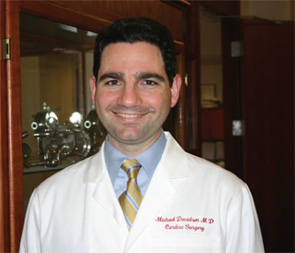
Dr. Mike Davidson.
Fortunately, these terrible events are relatively rare in the United States, a country with no shortage of guns. One study tallied 154 hospital-related shootings between 2000 and 2011; physicians were victims in 3%, and nurses were targeted in 5%.3 The most common site for medical violence was the emergency department (ED), often a portal of entry for street crime into inner-city hospitals. A survey of ED doctors in Michigan reported that 28% of respondents had been physically assaulted in the previous year.4 However, data from the U.S. Bureau of Labor Statistics suggest that the incidence of homicides at hospitals is similar to the rate observed in lawyers’ offices and lower than the rates in hotels, real estate offices and government workplaces.3
The story is quite different in China, a country where medical workplace violence is a growing concern. It’s estimated that patients injure approximately 10,000 medical personnel every year. A recent article in The New Yorker recounted a two-week period in 2012 when angry patients paralyzed a nurse in Nanjing, cut the throat of a doctor in Hebei and beat a Heilongjiang doctor to death with a lead pipe.5 The piece detailed the sad story of a 17-year-old boy from Inner Mongolia suffering from ankylosing spondylitis (AS) who experienced a miraculous improvement after starting treatment with infliximab, only to have the drug discontinued after he developed tuberculosis. Not surprisingly, his AS symptoms began to flare dramatically. His doctors were circumspect about their next course of action, preferring to communicate with the patient’s grandfather rather than with the patient himself. Outraged that his therapy was placed on an indefinite hold, he returned to the hospital, approached the first white coat he saw and plunged a 3″ knife deep into the wearer’s neck, killing the medical resident instantly.
According to our colleague, Qiang Tong, MD, a rheumatologist at Changhai Hospital in Shanghai, China, there are several factors underpinning this perilous work environment, including enormous patient caseloads that limit the time available for each patient, the inequitable distribution of healthcare resources in China and the high cost of most treatments.6
Dr. Tong described a novel approach being promoted by the Chinese Rheumatology Information System that attempts to improve upon this dismal state of affairs.Using a newly developed set of diagnostic and therapeutic data, these rheumatologists aim to standardize treatment for all lupus, rheumatoid arthritis and scleroderma patients by providing well-researched, evidence-based treatment protocols and, thus, assure a more equitable distribution of medical resources in the cities and the rural areas of China. Perhaps by creating a degree of transparency, patients may be dissuaded from resorting to violence when optimal clinical outcomes are not achieved.
Mourning a Death
In the weeks following Mike’s murder, a number of revelations emerged surrounding the shooter. We learned that he had a checkered past, harbored some deep personal grudges and had an unshakable belief in his own righteousness.2 Over the years, financial issues seemed to be a source of considerable stress. In 2011, he wrote to his congressman on behalf of his mother, complaining about an $8,000 medical bill incurred from a fatal heart attack that his father suffered, commenting, “I’m certain that Medicare is being overcharged thousands of times a day by hospitals that will have great difficulty justifying the costs they are passing on.”7

